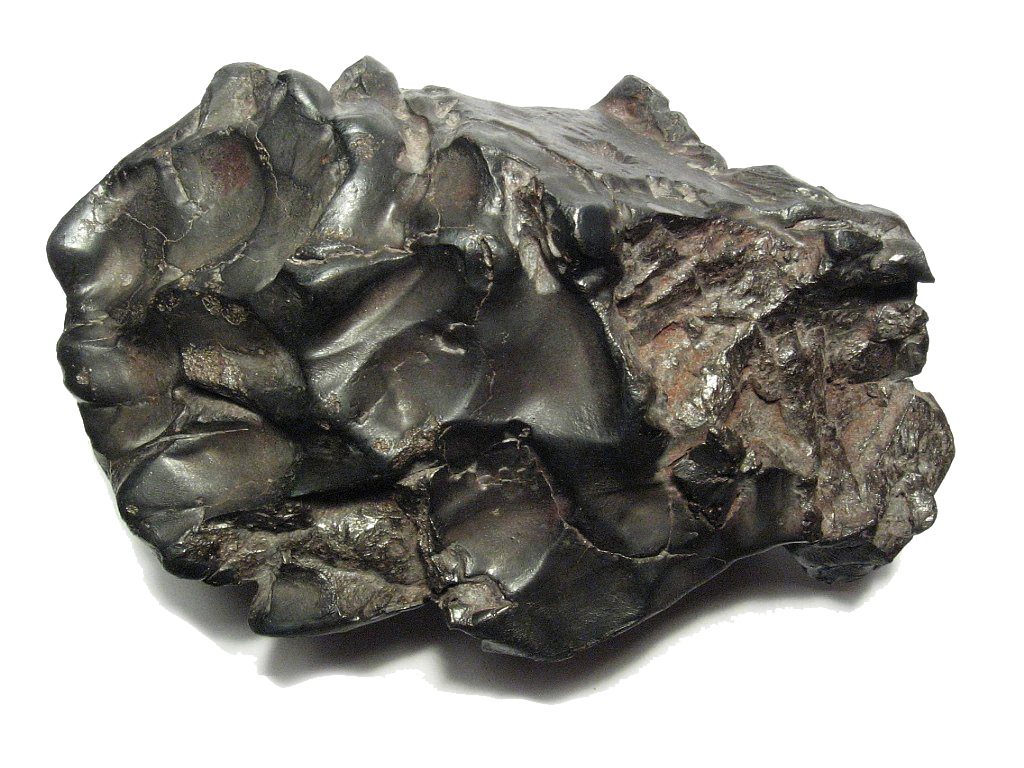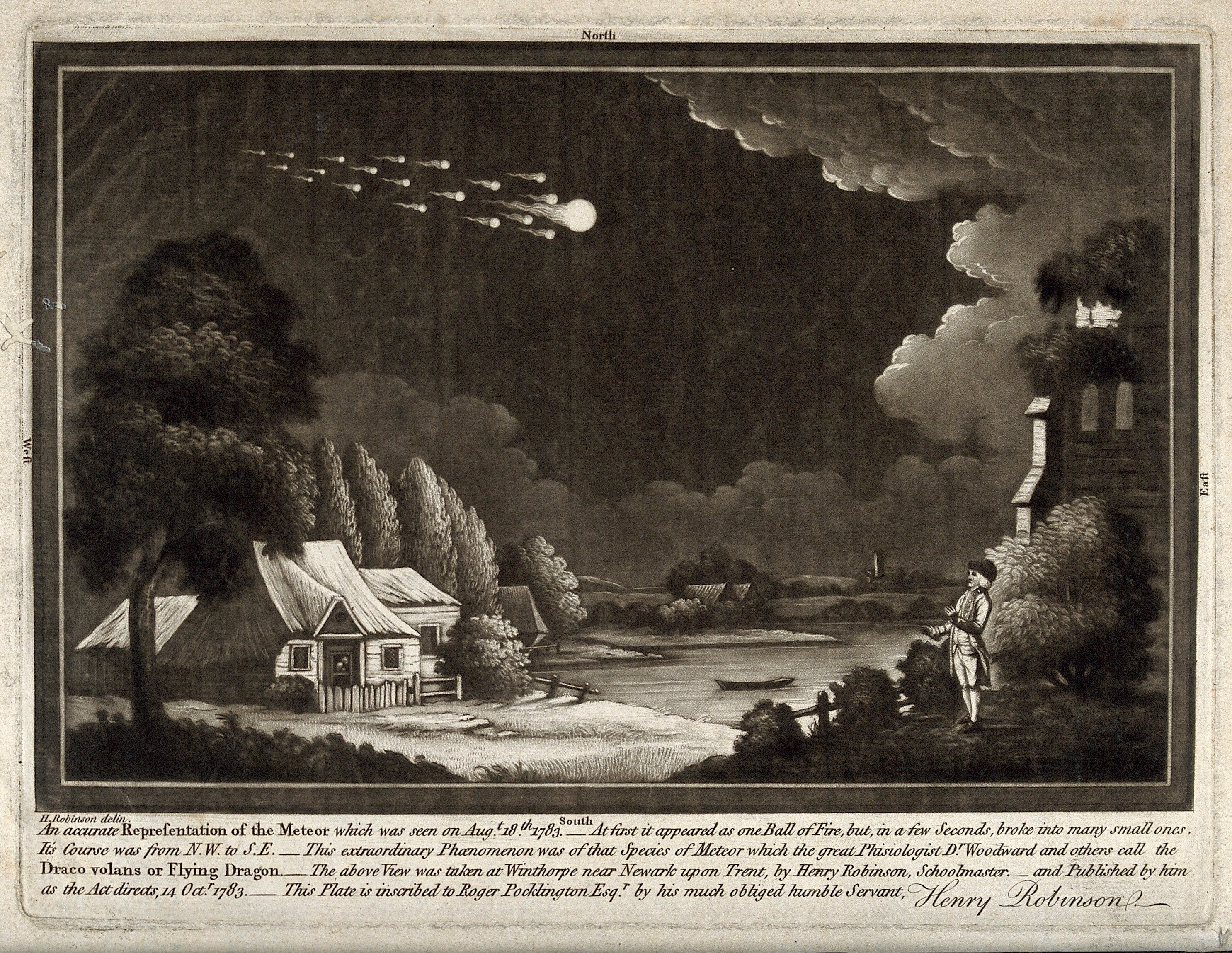Before the Iron Age, Most Iron Came From Space
New research is showing just how coveted meteoritic iron was in the Bronze Age.

Earth is not short of iron—the metal makes up much of our planet’s core and is the fourth most abundant element in the crust. But actually getting that iron out to use it—to make tools, for example—hasn’t always been a simple process. Most iron is packed away in ore, and you have to know how to smelt it to produce the metal, long prized for its strength and workability. Humans didn’t really master the process and produce iron at a large scale until around 1200 B.C. But once they did … well, the next period of human history is known as the Iron Age for a reason.
However, iron does appear in the archaeological record in the earlier Bronze Age. Egyptian pharaoh Tutankhamun, who died in 1324 B.C., for example, was buried with an iron headrest, bracelet, and dagger. For a long time it was thought that some civilization somewhere had managed to smelt iron earlier, resulting in these coveted, precocious artifacts. But there is another way to get iron—one that is literally out of this world.

“My impression is that archaeologists could not believe that people from the Bronze Age knew about meteorites,” says Albert Jambon, from the National Center for Scientific Research (CNRS) in France, who has for the past few years been investigating the idea. “Europeans started to understand meteorites only at the beginning of the 19th century. Before that scientists or philosophers would disregard stories about rocks fallen from the sky as tales or witchcraft.”
Some ancient civilizations did appear to have made the connection. Egyptian hieroglyphics referred to iron as being “from the sky,” and Confucius is said to have made the first description of a meteorite fall—both the streak in the sky and the rock on the ground—in 645 B.C. A recently made map of 500 years of meteor records shows that the West doesn’t really take notice of meteorites until the 16th century or so. Until the early 19th century most Western astronomers shared Isaac Newton’s assumption that rocks didn’t simply fall from the sky.

It follows, Jambon explains, that it took Western archaeologists a long time to understand that ancient peoples could make the connection between the astronomical and earthly phenomena. It has been thought, for example, that the iron used by the Egyptians came from an early smelting industry in Anatolia, where the Hittites may have started to work iron as early as 1500 B.C.
Perhaps not coincidentally, some of the oldest records of meteors in the sky are found in cuneiform texts written in Hittite. As outlined by researcher Judith Kingston Bjorkman in a 1973 article, “Meteors and Meteorites in the Ancient Near East,” many of these descriptions were copies of even older records. One of them read: “If a shooting light flashes (as bright) as a light or as a torch from east to west and disappears (on the horizon) the army of the enemy will be slain in its onslaught.”
Bjorkman believed that the Hittite used meteors as a way to keep track of historical events. Jambon takes this one step further and believes that they were also harvesting their early iron from these celestial omens, and then trading some to Egypt. “Some archaeologists believed the Hittites invented iron making,” he says. “But they were just hunting meteorites.”

“The meteorite hypothesis has been raised consistently for all the early iron objects in the archaeological record, and in several cases this has been proved through scientific analyses,” says Marcos Martinón-Torres, an expert on archaeometallurgy at University College London. “However, there were some uncertain cases where the evidence was less clear.”
Jambon is determined to put an end to that uncertainty, so he spent the last few years visiting museums across Europe and the Middle East with a portable X-ray fluorescence spectrometer to scan iron artifacts—among them a dagger from Alaca Höyük, Turkey (2500 B.C.), a pendant and ax from Syria (2300 and 1400 B.C., respectively), several tools from China’s Shang Dynasty (1400 B.C.), and the iron items from Tutankhamun’s tomb.

One of the main challenges was to come up with a way to study the chemical composition of artifacts without damaging them. Jambon opted for portable equipment that allowed for tests in the field. “My portable spectrometer allowed me to go everywhere to do this kind of analysis,” he says. “I tried to get a large number of samples but I could only choose what what was available—iron gets rusted—and these were well preserved.”
“The main contribution of Jambon’s approach is that he has developed a method that allows us to test this hypothesis nondestructively,” says Martinón-Torres. Jambon was particularly interested in searching these artifacts for nickel, which is not found in smelted iron. By contrast, meteoritic iron is usually high in nickel and cobalt.
The first step was to check the metallic makeup of known meteorites. He looked at 17 examples, but the most important was a 577-pound monster from the Morasko Meteorite Nature Reserve in Poland. “Looking at a such a big meteorite allowed to me to check for iron variability within a single rock and to gather data from its outside surface, which—like many Bronze Age tools—was oxidized.”

He then turned his attention to the Bronze Age artifacts. But the problem was, of course, corrosion. “Some archaeologists were skeptical, as they thought that the amount of nickel found in Bronze Age iron tools was too low to consider them of meteoritic origin,” he says. “But I’m a trained cosmochemist, so I knew the problem was just corrosion. And I was able to show—partly thanks to Morasko meteorite data—that nickel was leached away during corrosion.”
Taking this corrosion into account, each of the artifacts Jambon studied had enough nickel to rule out having been smelted. “The few iron objects from the Bronze Age sensu stricto that could be analyzed are definitely made of meteoritic iron,” Jambon writes in the conclusion of his paper, which was published this month in the Journal of Archaeological Science.
This does not mean that some Bronze Age civilizations were not early iron smelters, says Martinón-Torres. “Systematic production of smelted iron does start in a period that many still call the Late Bronze Age,” with the first evidence of iron furnaces dating to around 1000 B.C. “But Jambon is likely to be correct in his assigning all the early odd objects to meteorites. This is something many of us suspected, but he is now providing the evidence to confirm this, and the touchstone to carry out similar tests on other objects.”

Jambon takes his hypothesis another step further. It is thought that the three items from Tutankhamun’s tomb were crafted of metal from three different meteorites. This, he says, suggests that meteorites were not just found, but actively searched for. “Iron was 10 times the price of gold back then,” he says. “It was like diamonds are today, an highly valuable material used only for jewels or tools for the king. My theory is that people were going mad to look for meteorites.”























Follow us on Twitter to get the latest on the world's hidden wonders.
Like us on Facebook to get the latest on the world's hidden wonders.
Follow us on Twitter Like us on Facebook